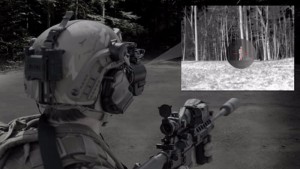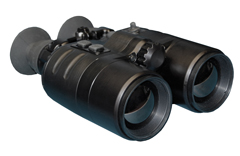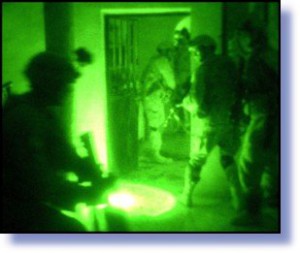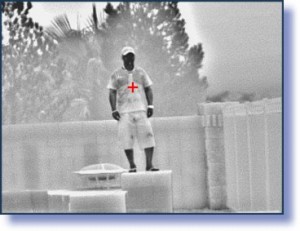
In military parlance, the job of a soldier is to find, fix, and finish the enemy. However, this is a bit difficult when the soldier has to fumble with different scopes while keeping eyes on the target. To simplify things, it is developing a combination thermal night vision and thermal imaging system that not only allows soldiers to rapidly acquire and engage targets in all weather and lighting, but also to remotely aim their weapons without looking through the sights.
Modern imaging systems have revolutionized warfare. The setting of the sun or a foggy day could once upon a time bring operations to a halt or place an army at a serious tactical disadvantage. But with thermal night vision and thermal imaging, soldiers can operate in the dead of night or in the smoke of battle and accurately identify targets that would have once been invisible.
Unfortunately, soldiers often soon discover that technology can be as much a nuisance as a blessing – as any squaddie weighed down with batteries can tell you. Vision systems are currently a particular problem. US soldiers use thermal night vision goggles for scanning areas and identifying targets, and a thermal sight on their weapons for targeting. Using these systems gives soldiers a huge advantage, but it also means swapping from goggles to sights, which introduces a strong chance of losing track of the target, or at the very least introduces a delay that could be literally fatal in a situation where getting off the first shot can mean the difference between life and death.
It is working to reduce this awkward swap over as part of the unfortunately named Enhanced Night Vision Goggle III and Family of Weapon Sight-Individual (ENVG III/FWS-I) program. This Rapid Target Acquisition (RTA) technology integrates the foot soldier’s night and thermal vision systems into a single smaller, lighter, cheaper, integrated thermal night vision and targeting system, which displays images from both in the soldier’s goggles.
This integration allows the soldier to not only keep the target in sight at all times, but also aim their weapon without raising it to their eyes because what the sight sees is transmitted to the goggles using a wireless video interface, which feeds the inputs in real time.
The new goggles improve the speed and accuracy of field operations, allows soldiers to be more maneuverable, extends the range of the target acquisition systems, and reduces the weight and power requirements of the technology, which means less fatigue from carrying it and its power supply around. In addition, the combination eliminates the reliance of foot soldiers on aiming lasers, so they can remain hidden.
This article comes from gizmag edit released





